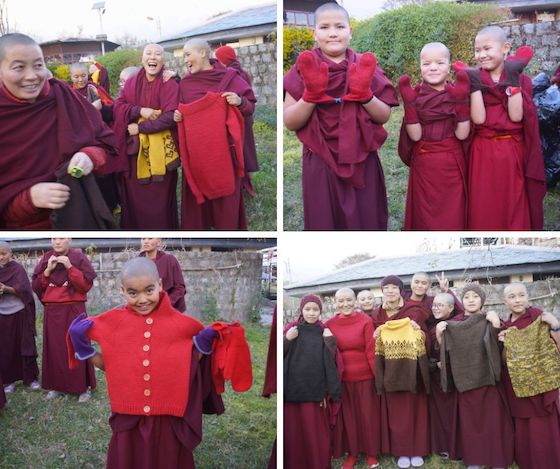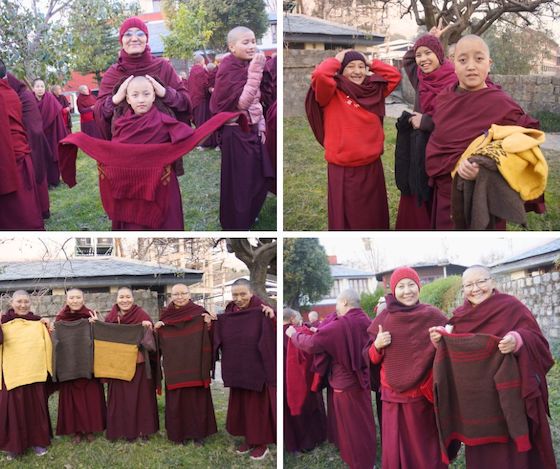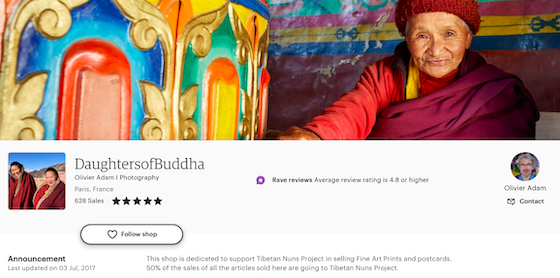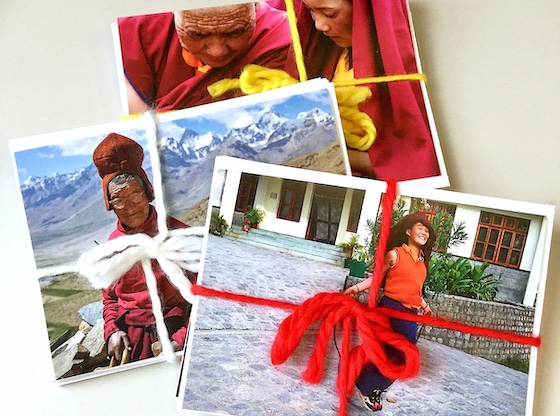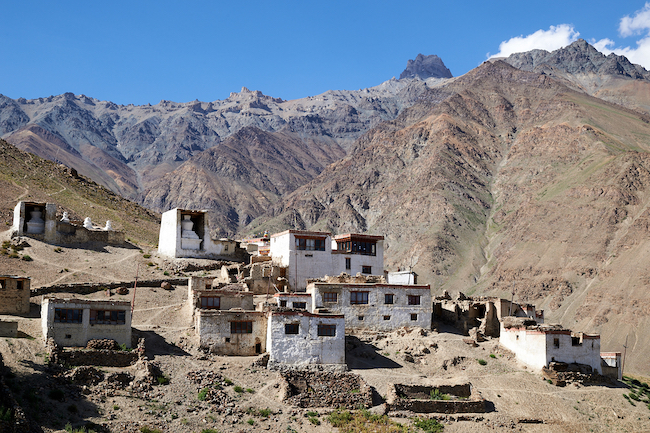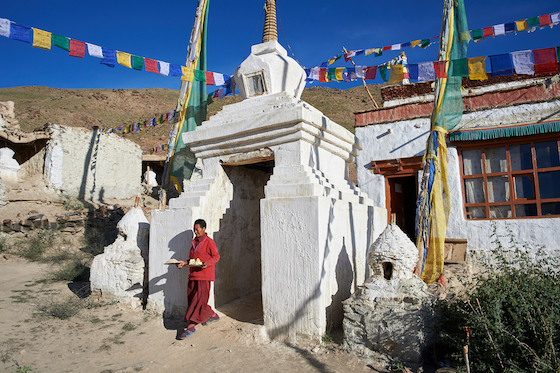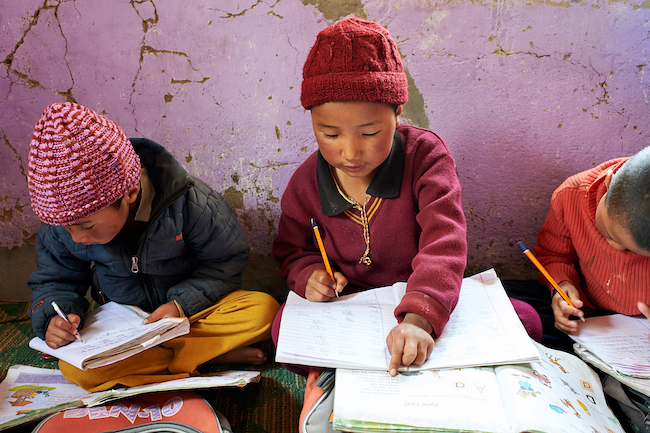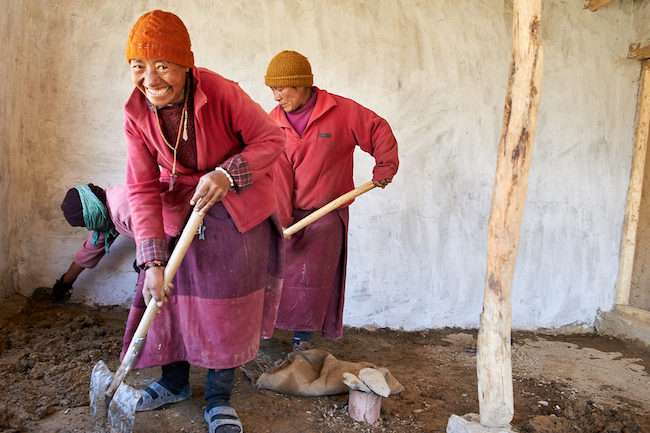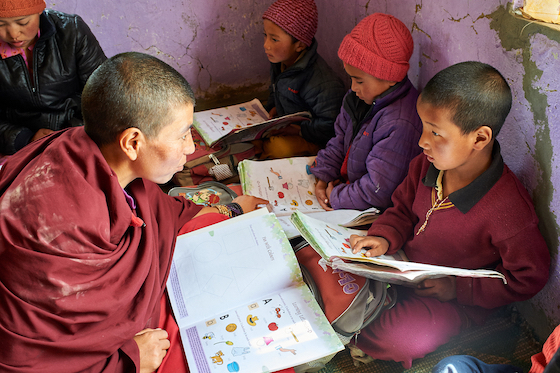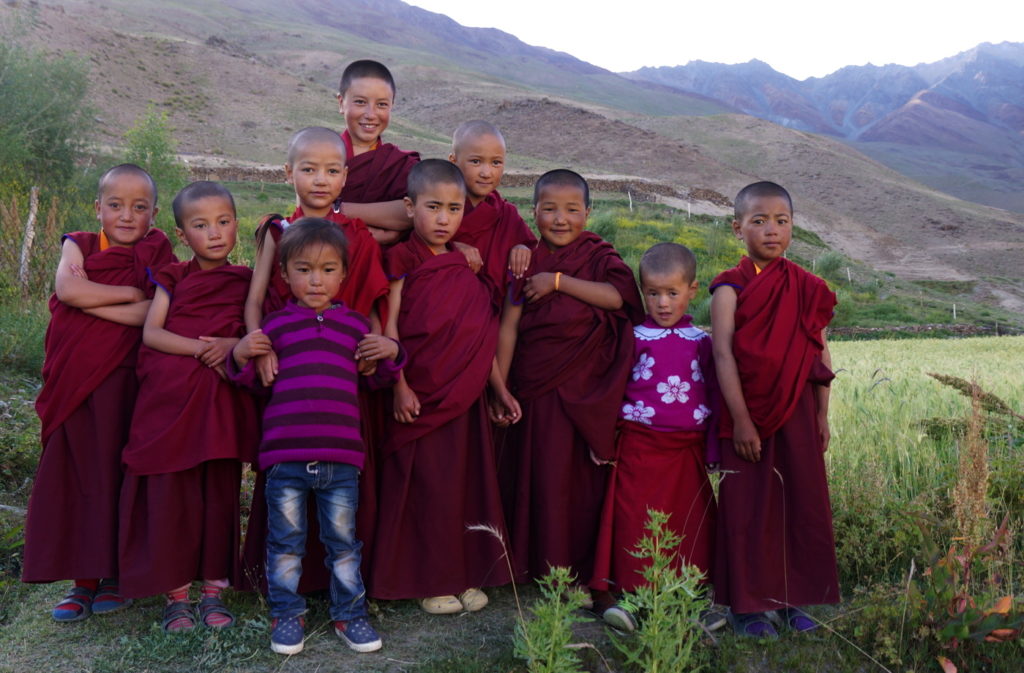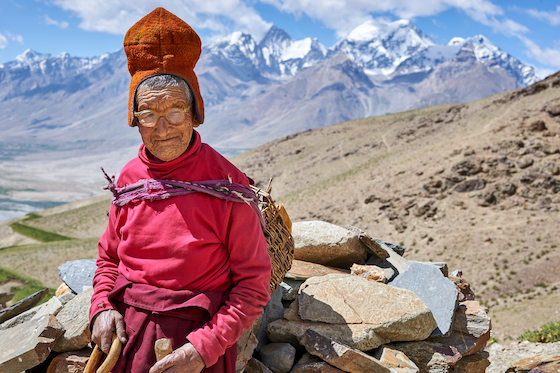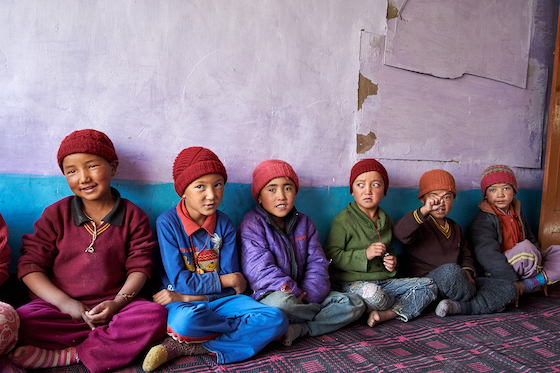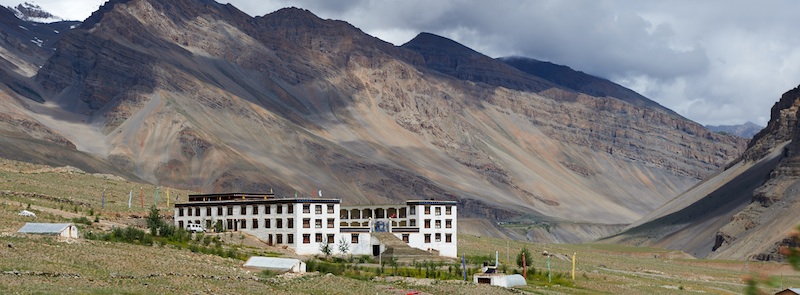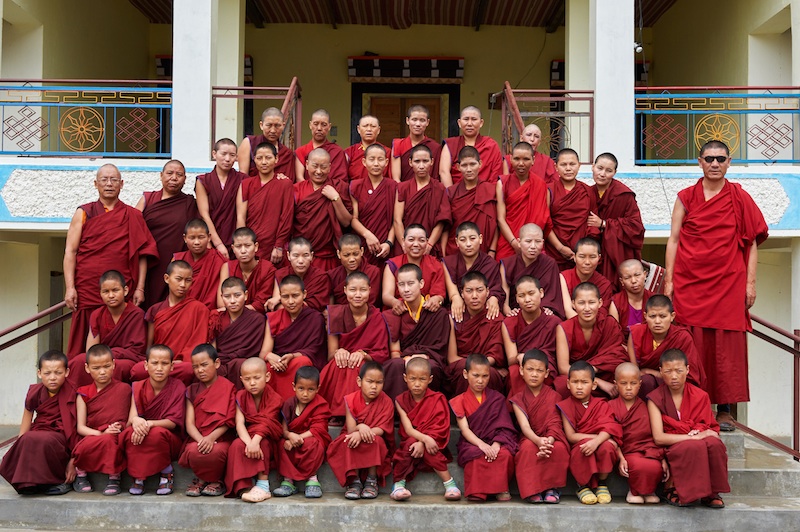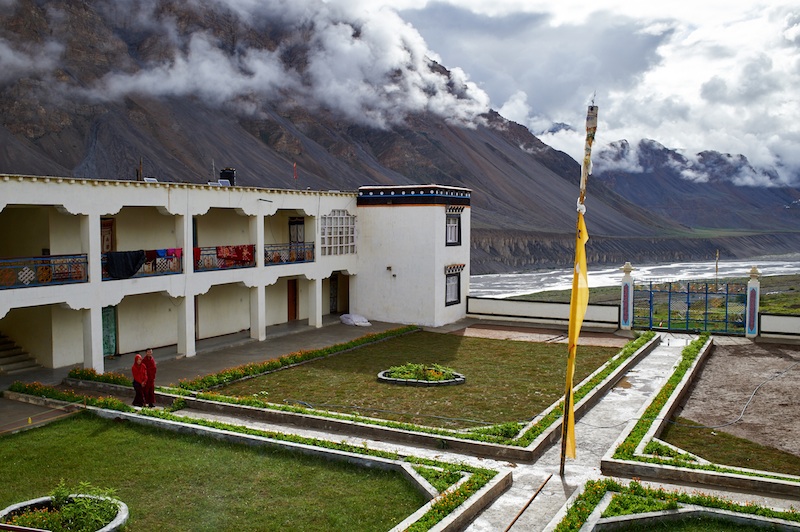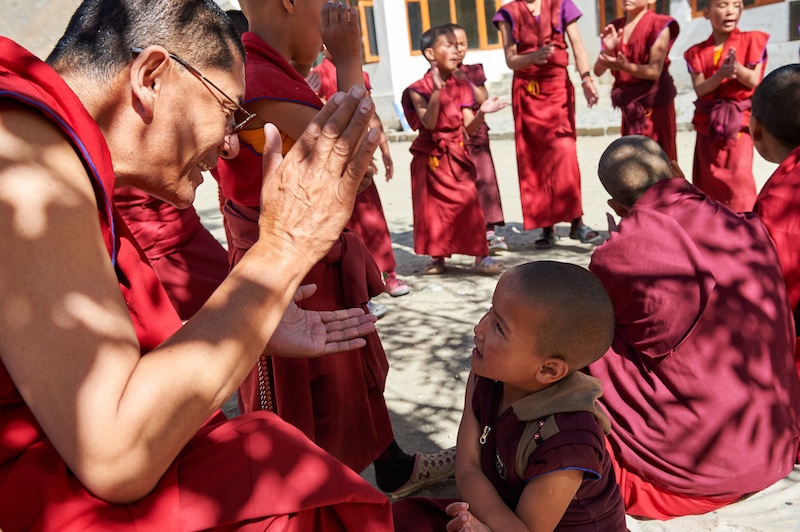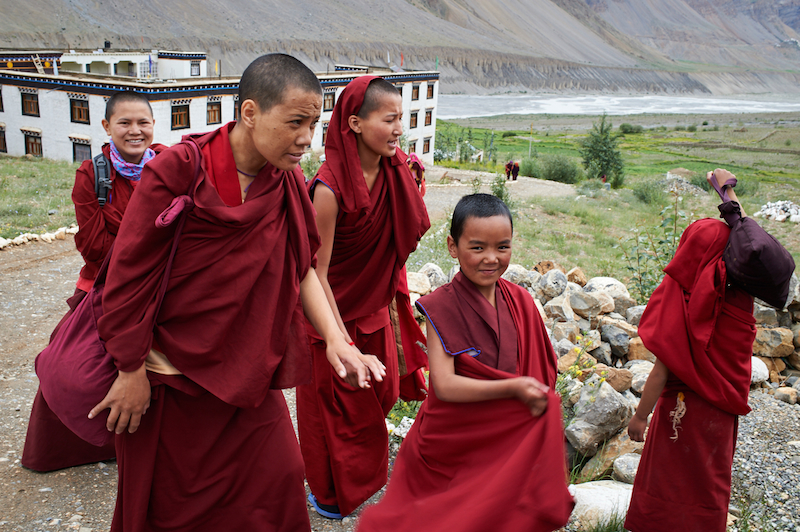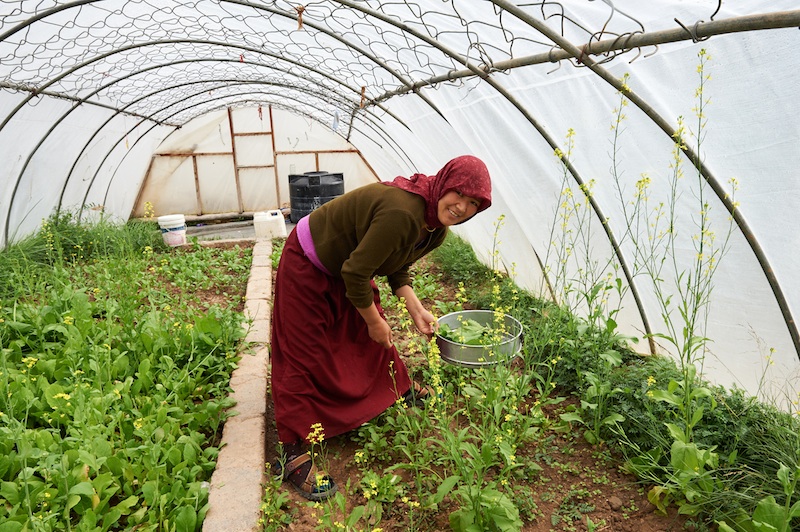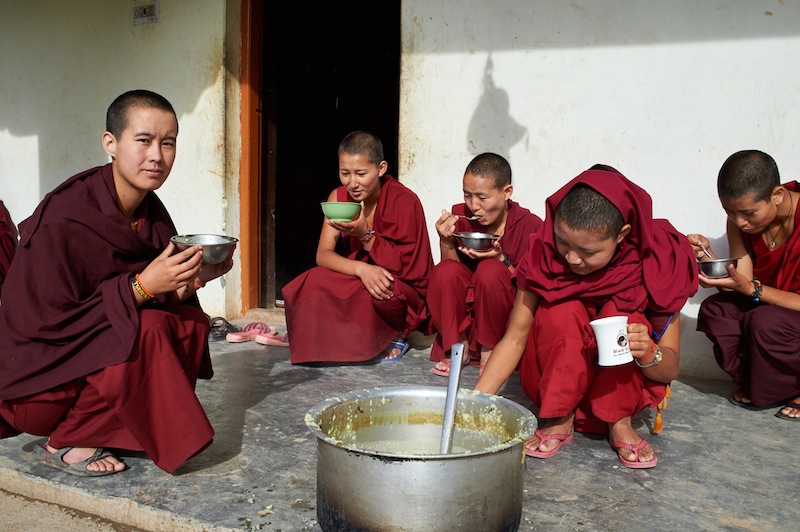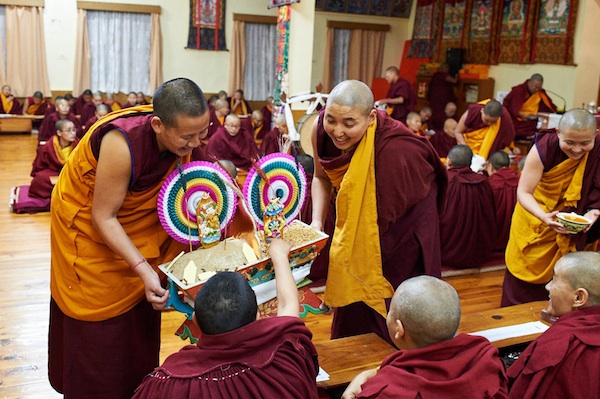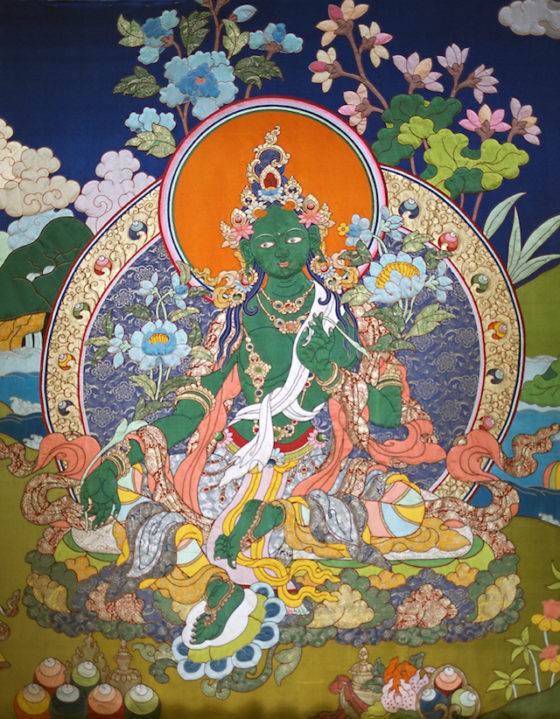Olivier Adam is a French photographer who has been documenting the rich and luminous world of Buddhist nuns since 2008. His photographs focus on the spiritual path and the strength of Tibetan nuns.

On August 14 2014, a moving exhibition of photographs by Olivier Adam will open at the Museum für Völkerkunde in Hamburg, Germany.
The opening of the exhibition will coincide His Holiness the Dalai Lama’s teachings in Hamburg and is being held in conjunction with a series of events about Tibetan culture and Buddhism, including a second exhibition at the museum about Tibetan nomads.
Olivier Adam has been an active supporter of the Tibetan Nuns Project since 2008. He is working tirelessly to spread the word about the Tibetan Nuns Project and donates a portion of proceeds from sales of his high-quality prints to help the nuns.
Here’s an interview with Olivier Adam about his work and why he finds the nuns so inspiring.
Q: When and how did you first start photographing Tibetan Buddhist nuns?
A: I started photographing Tibetan Buddhist nuns in February 2008 at various nunneries in and around Dharamsala, India – at the old Shugsep Nunnery, at Dolma Ling Nunnery and Institute and at Geden Choeling Nunnery – after a meeting with Rinchen Khando Choegyal, Director of the Tibetan Nuns Project. She gave me the authorization to start this work with the Tibetan nuns. It was just a few days before the dramatic events in Lhasa in 2008, when demonstrations erupted during the lead-up to the Beijing Olympics and Lhasa was completely locked down for a time.
Q: What is it about the nuns that inspires you?
A: I have always worked on feminine photography projects, for instance, the Royal Ballet of Cambodia or the women who were removing landmines in Cambodia. At the beginning I was inspired (and I am still inspired) by the devotion of these nuns. I’m very impressed at how hard they study, from 5 am until sometimes to 10 pm. They have a mix of laughter and serious discipline. I was very interested in documenting the daily life of these nuns, such as their morning prayers, their time in the classroom and all the moments the nuns are sharing together. I am trying to produce inspiring pictures.
Then journey after journey, I started to collect the stories of these nuns, especially those nuns who had escaped Tibet. These are such difficult stories, full of emotion, and some of the nuns wept when referring to these moments. Some of them had spent years in prison because they took part in peaceful demonstrations in Tibet. At the same time, I never felt in their words, in their eyes, in their acts, any loss of compassion, even towards the people who had tortured them.
Day after day I discovered that the nuns and, more Tibetan women in general, are deeply involved in resistance in Tibet and in exile, as I saw them demonstrating on March 10th, the anniversary of the Tibetan uprising in 1959.
Q: You’ve worked very hard to spread the word about the Tibetan Nuns Project. What do you want people to know about our work?
A: Education. Education is the main goal for me. The Tibetan Nuns Project is doing a wonderful job in educating nuns, not only in Buddhist studies but in all aspects of education that a woman will need in this life. I can recognize in this the influence of Rinchen Khando la who was President of Tibetan Women’s Association and also the first woman to become a minister in the Tibetan government in exile.
The work is so broad, from taking care of elderly nuns who escaped Tibet and giving them assistance to, at the same time, building the future of young nuns. Tsewang Zangmo, for example, a young novice at Shugsep Nunnery, arrived few years ago from the border between Nepal and Tibet with eleven other nuns. As a school without tuition fees, the nunnery welcomes young girls from very poor families or who are orphans and provides them with a good education. The Tibetan Nuns Project is trying at the same time to help some remote nunneries to survive, such as Dorje Dzong Nunnery in Zanskar.
I’m also so happy that now nuns have the opportunity to take the Geshema exams – exams equivalent to a PhD in Tibetan Buddhism that, until recently, were only open to monks.
Q: You travel widely to remote locations? Can you tell us about one of your favorite adventures?
A: Discovering Zanskar, one of the highest-altitude inhabited valleys in the Himalayas and the nunneries there two years ago was such an adventure. The nunneries in Zanskar are desperately short of schools and teachers. This is why the Tibetan Nuns Project is helping Dorje Dzong with their education projects. In addition to taking pictures, we helped as much as we could to start building some new houses and we helped the nuns to wash barley to prepare tsampa (roasted barley flour) for the coming winter. All this happened at an altitude of 4000 meters, with two nuns who are 80 years old and full of energy. It was such an adventure. Next month I will be back there at Dorje Dzong to give them some prints and to continue my report there.
Q: This August 14 your exhibition “Tibetan Nuns: Resistance and Compassion” is opening in Hamburg. Tell us about it.
A: It’s such a precious occasion to show this work about Tibetan nuns to a very large public and for a long time because the exhibition will run from August 14th to the end of November at least and maybe even to February.
This exhibition has already been shown in different places in France, but never in such an institution where around 100,000 visitors are expected to see it.
Dominique Butet who is working with me, collecting interviews of the nuns and writing regular articles about these nuns, and Heide Koch who initiated this exhibition in Hamburg and organized it with me, both put real effort into writing the most meaningful texts to accompany the pictures to create an “educational” exhibition.
We are also expecting a visit to the museum by His Holiness Dalai Lama who will be in Hamburg for teachings in August. His Holiness is a strong supporter of the nuns’ education and for women in general.
The opening event will also include a lecture on “Tibetan Buddhist Nuns in Exile: Heading to a New Self-Confidence” by Dr. Rotraut Jampa Wurst and also the movie In the Shadow of the Buddha about nuns’ daily life.
It’s also an occasion to sell some prints and postcards in the museum’s shop and 25% of the benefits will go directly to the Tibetan Nuns Project.
Q: Do you have any favorite photos of the nuns?
A: Difficult question… because each picture is a meeting.
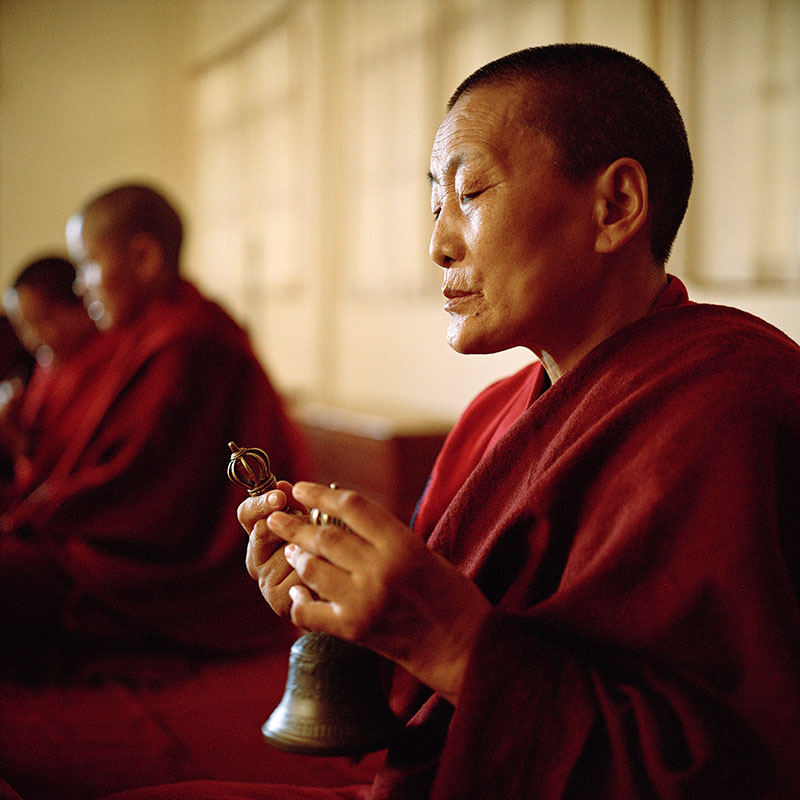
I will first choose one inspiring picture of a ritual I did at Shugsep Nunnery. The 25th day of each lunar month is dedicated to the ritual of Dakini which celebrates the female wisdom. They are considered emanations of the Buddhas as well as guardians of secret knowledge. I hope this picture may inspire all practicioners.
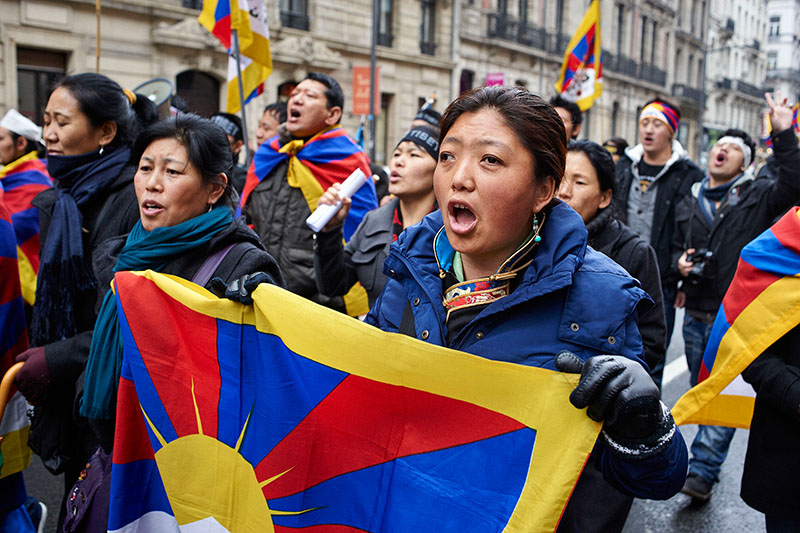
Then, I would definitely choose this picture of Gyaltsen Drölkar that I took when she was demonstrating in Belgium on March 10th.
When Gyaltsen Drölkar was only 19 years old and already a nun she was arrested in Lhasa, during a non-violent demonstration. In 1993, she and 13 other imprisoned nuns secretly recorded cassettes with songs praising the beauty of the Land of Snow and expressing their yearning for freedom. This cost her another eight years of ill treatment and imprisonment. In 2002 Gyaltsen Drölkar was finally freed but she suffers from the severe physical consequences of her 12 years in prison. She now lives in Belgium where she was granted political refugee status.
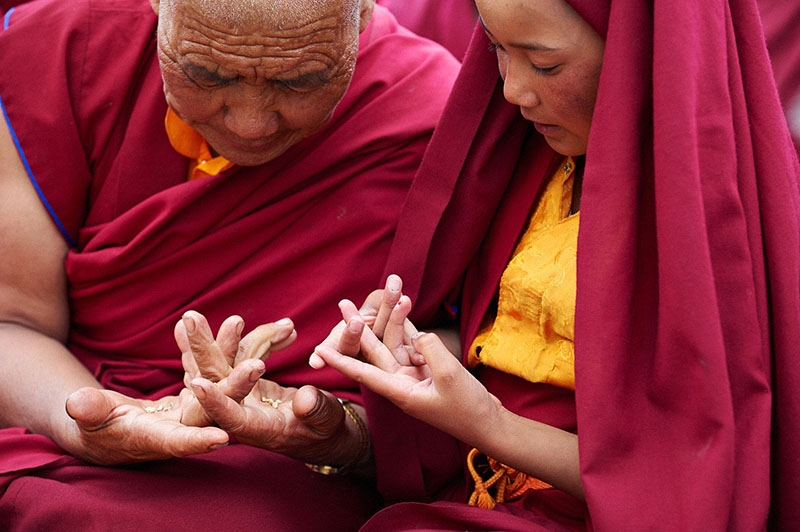
Finally, I love this picture of a senior nun taking care of her community by teaching a young one the mudra (gesture) used in a mandala offering, taken during the teachings of His Holiness the Dalai Lama in Zanskar.
Q: Any further thoughts?
A: I would like to share these few words from His Holiness Dalai Lama who is here teaching in Ladakh, from where I’m answering these questions:
“We must insist on education for all. Women must be much more involved in our societies and take part in the building of a more peaceful, less violent world in which people help one another.” Tenzin Gyatso, His Holiness the 14th Dalai Lama
Biography of Olivier Adam
Olivier Adam was born in Laval, France in 1969. He is a physicist, and graduated from the “ Ecole Normale Supérieure” in Paris, but through the years he has turned to being a photographer. He is now a freelance photographer and a teacher at the photography school Auguste Renoir in Paris. In 2001, his work on the Khmer dance and silk was exhibited at the Palais de l’Unesco in Paris. For several years now he has been studying the Tibetan culture and Buddhism, specially attending the Kalachakra classes, taught by His Holiness the Dalai Lama all over the world.
Olivier belongs to a humanist tradition and works on personal subjects, mixing both Man and the Sacred. Rituals, women and their universe hold an important place in his photos. He has worked together with Sofia Stril-Rever, Matthieu Ricard and Manuel Bauer on a book called Kalachakra : un mandala pour la paix, published in April 2008 by Editions de la Martinière and also the book Dalai Lama- Appel au monde published in May 2011 by Le Seuil.
Since 2008, Olivier has been closely interested in the lives of the Tibetan nuns in exile. He started this work in five nunneries near Dharamsala and he has continued to expand this work by meeting nuns who were former political prisoners and who have been granted shelter in the West. Dakinis, this series on the Buddhist female universe, supplemented by sounds and interviews collected by Dominique Butet, Oliviers’s wife, now extends to nuns from across the Himalayas.
Olivier Adam is a regular photographer for the French magazine Regard Bouddiste and is one of the founders of Dharma Eye, a collective of practicing Buddhist photographers and visual artists who use their art in support of beneficial Dharma causes.
You can see more of Olivier Adams work and purchase his prints at these two websites:
www.olivieradam.fr
www.dharmaeye.com
